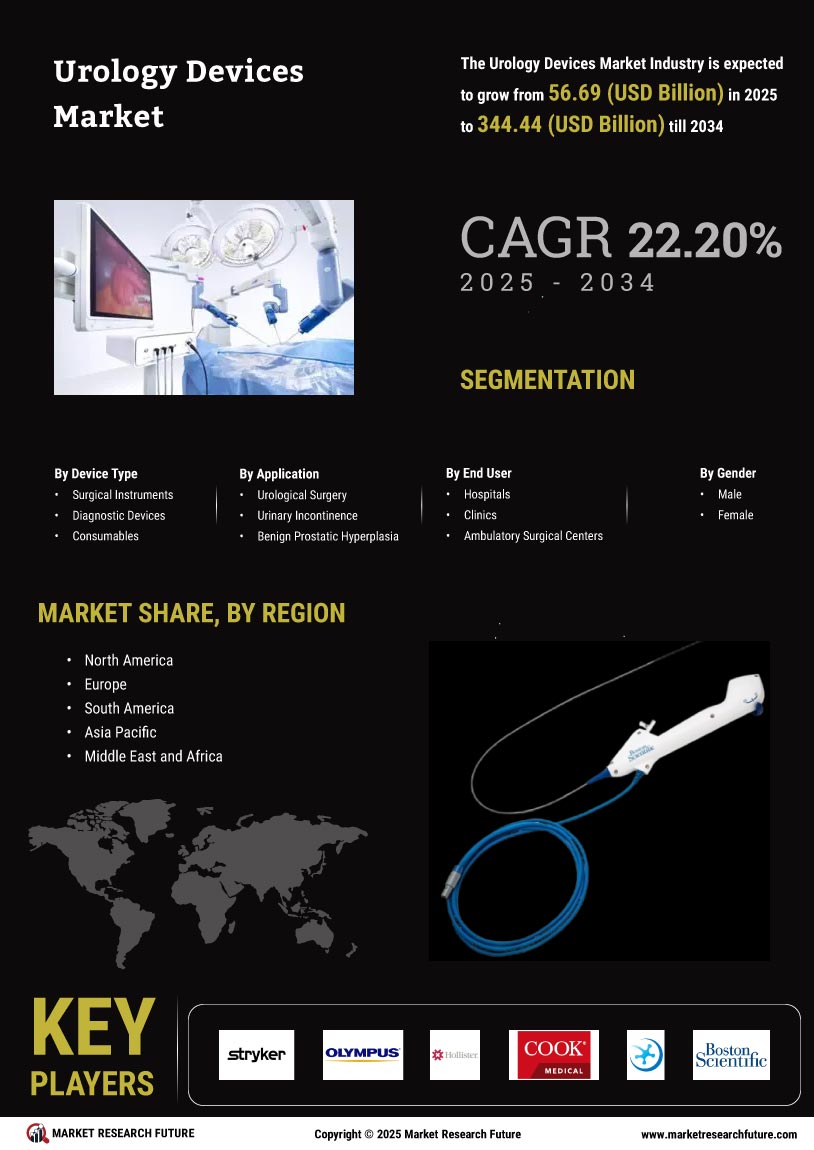Market Growth Projections
The Global Urology Devices Market Industry is projected to experience substantial growth over the coming years. With an estimated market value of 7.52 USD Billion in 2024, it is anticipated to reach 11.5 USD Billion by 2035. This growth reflects a compound annual growth rate (CAGR) of 3.94% from 2025 to 2035. Such projections indicate a robust demand for urology devices, driven by factors such as technological advancements, rising healthcare expenditure, and an increasing prevalence of urological disorders. The market's expansion is likely to create opportunities for manufacturers and healthcare providers alike.
Growing Awareness and Education
Enhanced awareness and education regarding urological health contribute to the expansion of the Global Urology Devices Market Industry. Campaigns aimed at educating the public about urological disorders and available treatments encourage individuals to seek medical advice and intervention. Organizations and healthcare providers are increasingly focusing on outreach programs that highlight the importance of early diagnosis and treatment. This growing awareness is likely to lead to higher demand for urology devices, as patients become more informed about their options and the benefits of seeking timely care.
Increasing Healthcare Expenditure
Rising healthcare expenditure across various regions positively influences the Global Urology Devices Market Industry. Governments and private sectors are investing more in healthcare infrastructure, which includes the procurement of advanced urology devices. For instance, countries with robust healthcare systems, such as the United States and Germany, allocate significant portions of their GDP to healthcare, facilitating access to innovative urology treatments. This trend is expected to bolster the market, as higher spending correlates with improved healthcare services and increased availability of urology devices, ultimately supporting the market's growth trajectory.
Aging Population and Lifestyle Changes
The aging population, coupled with lifestyle changes, plays a crucial role in shaping the Global Urology Devices Market Industry. As individuals age, they are more susceptible to urological conditions, which are often exacerbated by lifestyle factors such as obesity and sedentary behavior. The demographic shift towards an older population, alongside increasing rates of obesity, suggests a heightened need for urology devices. This trend is expected to drive market growth, as healthcare systems adapt to meet the needs of an aging population, thereby increasing the demand for urological interventions.
Rising Prevalence of Urological Disorders
The increasing incidence of urological disorders globally drives the Global Urology Devices Market Industry. Conditions such as urinary incontinence, benign prostatic hyperplasia, and kidney stones are becoming more prevalent, particularly among aging populations. For instance, the World Health Organization indicates that the global population aged 60 years and older is projected to reach 2.1 billion by 2050, which correlates with a rise in urological conditions. This demographic shift suggests a growing demand for urology devices, contributing to the market's projected value of 7.52 USD Billion in 2024 and an anticipated growth to 11.5 USD Billion by 2035.
Technological Advancements in Urology Devices
Innovations in medical technology significantly enhance the Global Urology Devices Market Industry. The introduction of minimally invasive surgical techniques and advanced imaging technologies has improved patient outcomes and reduced recovery times. For example, robotic-assisted surgeries and laser lithotripsy have revolutionized treatment approaches, making procedures safer and more efficient. These advancements not only attract healthcare providers but also encourage patients to seek treatment, thereby expanding the market. As technology continues to evolve, it is likely that the market will experience sustained growth, with a projected CAGR of 3.94% from 2025 to 2035.

















Leave a Comment